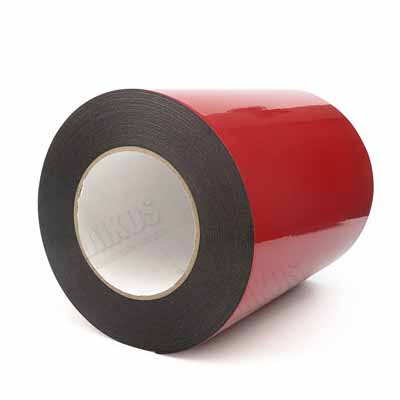Polyethylene (PE) foam tape is a double-sided adhesive tape widely used in the packaging, construction, automotive, and electrical industries. It is made from a closed-cell polyethylene foam with an acrylic or rubber-based adhesive on both sides. PE foam tape is versatile, easy to use, and offers excellent insulation, cushioning, and bonding properties. In this article, we will discuss the key aspects of the PE foam tape industry, including its applications, types, features, market trends, and challenges.
PE foam tape has a broad range of applications across industries. In the packaging industry, it is used as a cushioning and shock-absorbing material for fragile products such as electronics, glassware, and pottery. In the construction industry, it is used as a weatherproofing and sealing material for windows, doors, and roof panels. In the automotive industry, it is used as a vibration dampener and noise reducer for engine compartments, dashboards, and doors. In the electrical industry, it is used as an insulating material for cables, transformers, and batteries.
PE foam tape comes in various types and sizes to cater to different needs. The most common types are:
1. Single-sided foam tape: This type has adhesive on one side and foam on the other side, making it ideal for bonding to flat surfaces.
2. Double-sided foam tape: This type has adhesive on both sides and can bond to uneven surfaces or objects.
3. Acrylic foam tape: This type uses an acrylic adhesive that provides a strong, long-lasting bond, even in harsh weather conditions.
4. Rubber foam tape: This type uses a rubber-based adhesive that provides a flexible, easy-to-tear bond, making it ideal for joining and sealing materials.
PE foam tape has several features that make it an attractive choice for various applications. Some of its notable features are:
1. High tensile strength: PE foam tape can withstand high stress and strain without breaking or deforming, making it ideal for bonding and holding materials together.
2. Excellent cushioning: PE foam tape offers excellent shock absorption and cushioning properties, protecting products from damage during transportation or handling.
3. Weather resistance: PE foam tape can resist high and low temperatures, moisture, UV radiation, and chemicals, ensuring long-lasting bonding and sealing performance.
4. Easy to use: PE foam tape is easy to apply, cut, and remove, saving time and effort in production and assembly.
Despite the positive market trends, the PE foam tape industry faces some challenges that need to be addressed. Some of the challenges are:
1. Competition: The PE foam tape market is highly competitive, with many players offering similar products and services. Companies need to differentiate themselves by offering unique features, quality, and customer service.
2. Cost: The production cost of PE foam tape can be high due to the raw material and manufacturing processes involved. Companies need to optimize their operations and supply chains to reduce costs while maintaining quality.
PE foam tape is an essential material in various industries, providing cushioning, bonding, sealing, and insulating solutions. The industry is growing steadily, driven by the demand for high-quality and eco-friendly products. However, the industry also faces challenges related to competition, cost, and environmental impact. Companies in the industry need to stay competitive by offering innovative and sustainable solutions while maintaining high quality and customer service.




